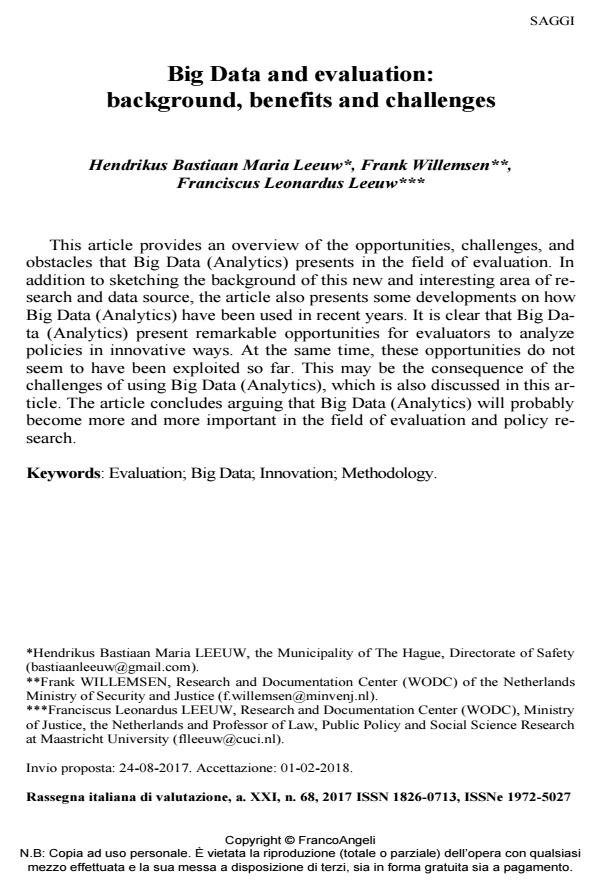Big Data and evaluation: background, benefits and challenges
Journal title RIV Rassegna Italiana di Valutazione
Author/s Hendrikus Bastiaan Maria Leeuw, Frank Willemsen, Franciscus Leonardus Leeuw
Publishing Year 2018 Issue 2017/68
Language Italian Pages 21 P. 27-47 File size 675 KB
DOI 10.3280/RIV2017-068003
DOI is like a bar code for intellectual property: to have more infomation
click here
Below, you can see the article first page
If you want to buy this article in PDF format, you can do it, following the instructions to buy download credits

FrancoAngeli is member of Publishers International Linking Association, Inc (PILA), a not-for-profit association which run the CrossRef service enabling links to and from online scholarly content.
This article provides an overview of the opportunities, challenges, and obstacles that Big Data (Analytics) presents in the field of evaluation. In addition to sketching the background of this new and interesting area of research and data source, the article also presents some developments on how Big Data (Analytics) have been used in recent years. It is clear that Big Data (Analytics) present remarkable opportunities for evaluators to analyze policies in innovative ways. At the same time, these opportunities do not seem to have been exploited so far. This may be the consequence of the challenges of using Big Data (Analytics), which is also discussed in this article. The article concludes arguing that Big Data (Analytics) will probably become more and more important in the field of evaluation and policy research.
Keywords: Evaluation; Big Data; Innovation; Methodology.
Hendrikus Bastiaan Maria Leeuw, Frank Willemsen, Franciscus Leonardus Leeuw, Big Data and evaluation: background, benefits and challenges in "RIV Rassegna Italiana di Valutazione" 68/2017, pp 27-47, DOI: 10.3280/RIV2017-068003